Birch Leaf Roller
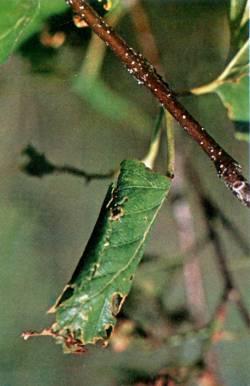
United States Department of Agriculture
Prepared byForest Service Alaska Region Leaflet
R10-TP-8
BIRCH LEAF ROLLER
Birch leaf rollers are a recurrent problem throughout south-central and interior Alaska. Rural and urban residents in the vicinity of Anchorage, Eagle River, Palmer, and all parts of the northern Kenai Peninsula witnessed dramatic increases in leaf roller populations in the late 1970's. In 1977 activity covered an estimated 21,042 hectares (1 hectare equals 2.5 acres) with up to 100 percent defoliation in many areas.
Many insects fluctuate periodically in numbers. Leaf rollers are generally found every year in moderate to low numbers. Every few years populations increase as insect development is enhanced by favorable climatic conditions. These populations remain high for a few years and then are drastically reduced by such natural controls as parasites, predators, pathogens, and weather.
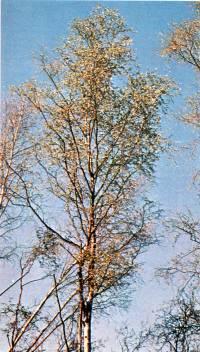
Figure 1. Light leaf roller damage.
Healthy, vigorous birch trees can usually sustain 2 to 3 years of light to heavy leaf rolling (Figures 1 and 2) and insect feeding with only minor effects. The most common effects of heavy leaf rolling are temporary growth reduction, occasional branch dieback, and, rarely, tree death. If a birch is not vigorous, its chance of death increases with 2 or more years of heavy infestation. This pamphlet is intended to provide homeowners with a description of leaf roller life history as well as guidelines to help reduce leaf roller damage to birch.

Figure 2. Heavy leaf roller damage.
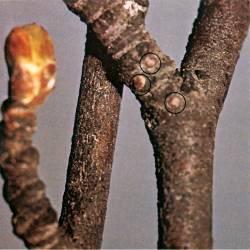
Figure 3. Leaf roller eggs on birch twig.
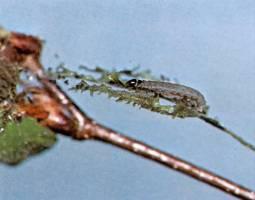
Figure 4. Leaf roller larva, or caterpillar.
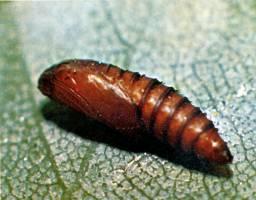
Figure 5. Leaf roller pupa.

Figure 6. Leaf roller adult.
LIFE HISTORY: In south-central Alaska 90 percent of the leaf rolling is caused by one small caterpillar, Epinofia solandriana L. This leaf roller has a 1-year life cycle in south-central and possibly interior Alaska. The leaf roller overwinters as an egg on roughened bud stalks of birch trees (Figure 3). The small reddish-brown egg (about the size of a pinhead) hatches about mid-May. The young, whitish-yellow caterpillar begins to web and feed on the new developing birch leaves. The older, bluish-gray caterpillars (Figure 4) begin to roll individual birch leaves around the first of June. By the end of June, full-grown caterpillars vacate their leaf rolls, fall to the soil, and change into a pupa (Figure 5). The pupal, or resting stage, lasts 3 to 4 weeks. Small, gray-brown adult moths (Figure 6) emerge in August and deposit eggs on birch twigs. The moths are commonly encountered during the day on ground vegetation or on birch stems. No more leaf roller activity occurs until the following spring.
GUIDELINES FOR REDUCING LEAF ROLLER DAMAGE: For the most part, leaf roller suppression is not warranted on forested land. Leaf rollers are a natural occurrence in Alaska forests and cause very little permanent damage to the host tree. But, in urban areas, where trees are generally grown in more isolated, artificial conditions, leaf rollers can become much more damaging to a tree's health. Accordingly, the following control alternatives apply to urban and suburban settings.
"Do Nothing" Approach: If the birch trees are healthy and showing good growth, a few years of leaf rolling will not severely affect their diameter and height growth. Temporary growth reduction may occur. Tree death is generally rare. To ensure good tree vigor, these steps should be taken:
- Care should be taken to avoid damaging the trunk, injuring the roots, altering drainage patterns, or severely compacting the soil.
- Fertilization (Figure 7) helps promote tree vigor. The USDA Cooperative Extension Service recommends 1 to 2 pounds of fertilizer for each inch of tree diameter, applied by making a concentric series of holes, 8 to 10 inches deep around the tree, starting 2 feet from the trunk and extending beyond the drip line. Divide the fertilizer among the holes, and fill them with soil. Fertilization should begin in the spring and be continued through the summer. Stop fertilizing before the tree becomes dormant in the fall. Any complete lawn or garden fertilizer that is high in phosphorus is adequate.

Figure 7. Location and depth of fertilization.
Chemical Treatment: Chemical treatment may be needed if birch trees have shown heavy leaf rolling for two consecutive years and branch dieback is apparent. Insecticides should be applied late in May and early in June when birch buds have broken and new leaves are expanding. Young leaf rollers are quite susceptible to chemical treatment at this stage.
If spraying is delayed until leaf rolls can be seen, insecticides are not so effective because the caterpillars may have already vacated the leaf rolls.
Several insecticides containing Malathion and Carbaryl are registered by the Environmental Protection Agency for control of leaf rollers. When using insecticides, the entire label should be read carefully and all safety precautions should be followed. Your local USDA Cooperative Extension Service office can provide more information.
Birch Leaf Roller; by Edward H. Holsten, Entomologist, Forest Pest Management, State & Private Forestry, USDA Forest Service, Alaska Region.
Additional information on this insect and suppression measures can be obtained from your local USDA Cooperative Extension Service office, Alaska State Forestry office, or from:
Forest Health Protection
State and Private Forestry
USDA Forest Service
3700 Airport Way
Fairbanks, Alaska 99709
Phone: (907) 374-3758
Forest Health Protection
State and Private Forestry
USDA Forest Service
161 East 1st Avenue
Anchorage, Alaska 99501
Phone: (907) 743-9456
Forest Health Protection
State and Private Forestry
USDA Forest Service
11175 Auke Lake Way
Juneau, Alaska 99801-
Phone: (907) 586-8883
CAUTION: Pesticides can be injurious to humans, domestic animals, desirable plants, and fish or other wildlife-if they are not handled or applied properly. Use all pesticides selectively and carefully. Follow recommended practices for disposal of surplus pesticides and pesticide containers. Mention of a pesticide in this publication does not constitute a recommendation for use by the USDA, nor does it imply registration of a product under the Federal Insecticide, Fungicide, and Rodenticide Act, as amended. Mention of a proprietary product does not constitute an endorsement by the USDA.

